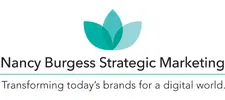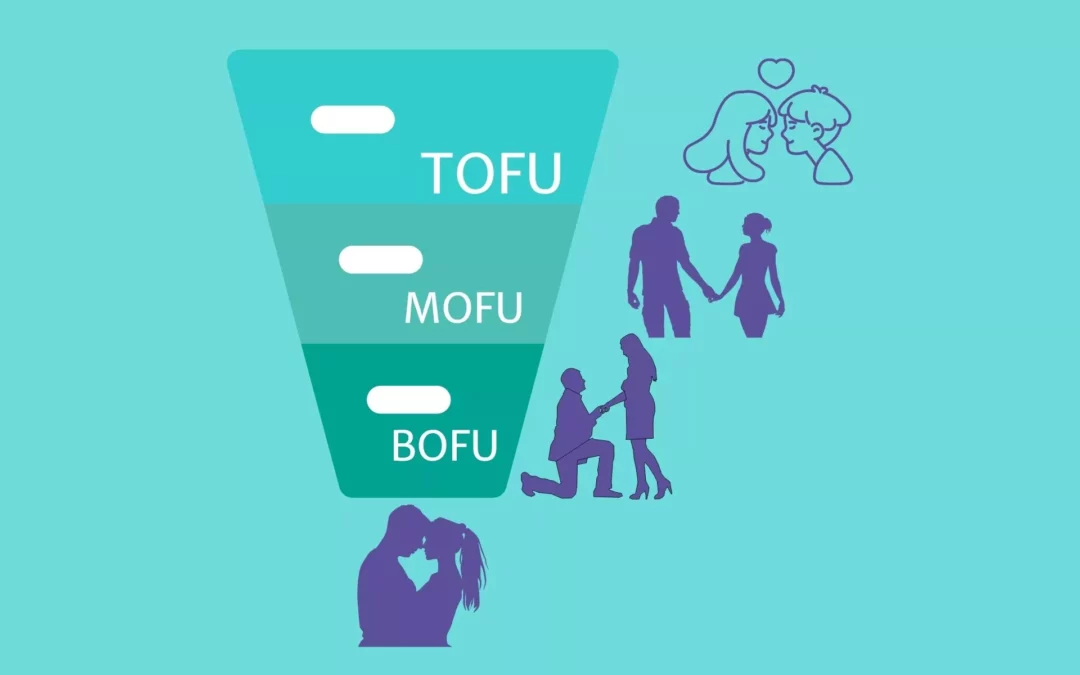Many small business owners have begun implementing a content marketing strategy for their businesses. But what is the meaning of content marketing? And how can you be successful at it?
Famously, Bill Gates coined the term “Content is King” back in 1996. That phrase still holds true today. Whether content is king or queen on the internet, it’s still royalty all these years later. But first, what is content?
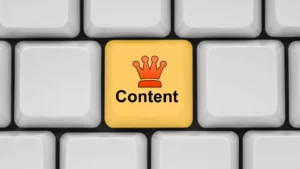
What is the meaning of content marketing?
The Content Marketing Institute offers this definition of content marketing:
“Content marketing is a strategic marketing approach focused on creating and distributing valuable, relevant, and consistent content to attract and retain a clearly defined audience — and, ultimately, to drive profitable customer action.”
Some important words exist in that description for small businesses. Notice that content is to be VALUABLE, RELEVANT, and CONSISTENT. Additionally, the intended audience is clearly defined. What’s more, it ultimately drives profitable action.
Posting content that is popular or gets “likes” is not enough, because it doesn’t generate business. At the same time, content marketing may not drive business immediately.
We’ll discuss this “ultimately” part of the content marketing definition later, but first we’ll get to the “why” of content marketing.
Top 5 reasons for a small business owner to invest in a content marketing strategy
Although you may choose to participate in content marketing for a variety of reasons, we offer these five reasons why you may want to consider a content marketing strategy.
1. People are skeptical of traditional advertising.
First, traditional advertising is arguably less effective than it once was. Gone are the days of hard-drinking, heavily-smoking Don Drapers of the world. Gone are the days when companies could say they had the “best soap on Earth,” and people would simply believe it. People are skeptical of businesses’ advertising messages, and they’re tired of being sold.
Moreover, research suggests that content marketing costs 62% less than traditional marketing AND generates about three times as many leads.
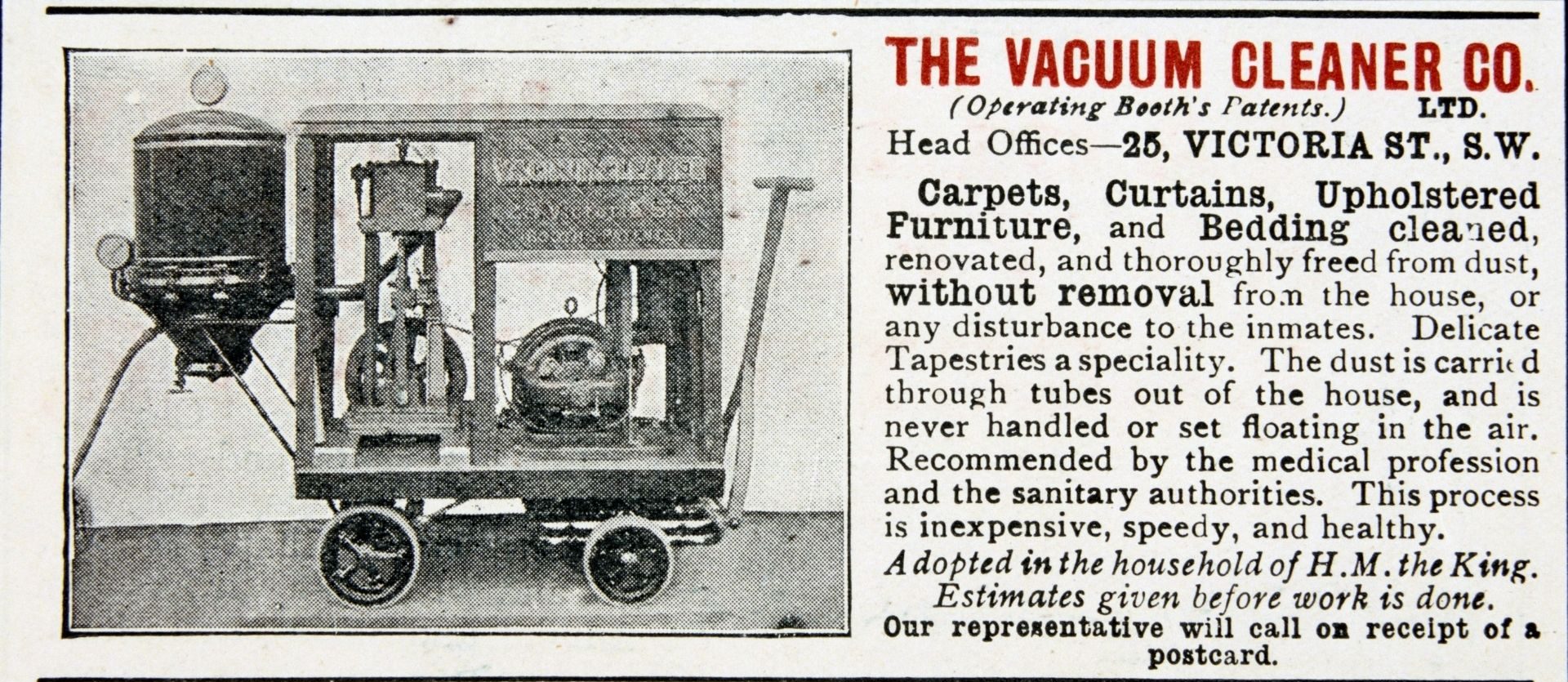
2. Content marketing can help you outpace your competition online.
Another reason for a small business owner to invest in a content marketing strategy is to win business. People are searching for services and product information on the internet. You can help them access info about your products or services 24/7.
Would you rather they find your company information online? Or your competitors? Research shows that even when people make in-store purchases, they often search for the item online first. They’ll consume content such as articles, videos, or posts about products or services. What’s more, the percentage of people who search online before making a purchase first is increasing. For large ticket items, it exceeds 80%.
3. Content marketing can attract people at all stages of the customer journey.
Third, content can help create product awareness, interest, evaluation, and purchases. That’s the “ultimate” in profitable action. That’s why it’s important to have content that drives awareness, and content that keeps people coming back—until that day when the prospect or lead turns into a paying customer.
Similarly, if you have repeat customer business, you can serve existing customers with your content. You can help generate repeat business and even turn your customers into loyal advocates.
Often marketers refer to this process as a marketing funnel. (See sidebar below.) Although the model isn’t perfect, it’s a great paradigm to understand your customer’s buying journey.
4. Content marketing is a winning short- and long-term strategy for small businesses.
Another reason to participate in a content marketing strategy is that not only does it serve up short-term results, but also it can provide you with an organic (unpaid) reach that pays benefits for years to come. It can provide signals to Google and other search engines that create a better understanding of your business, and can help you rank higher in the search results for years to come. In fact, content is arguably THE most important factor for search engine optimization.
Unlike an ad that is more of a one-and-done process, content marketing is enduring. Furthermore, as the world evolves, the content can be updated—maintaining that organic reach.
5. Content Marketing Helps Your Sales Team
For businesses with a salesforce, content marketing can help warm leads, shortening the time between being a prospect or lead and being a purchasing customer. This enables sales teams to close more deals in the same amount of time.
While advertising focuses on what YOU want to tell your audience. Content marketing flips that thinking on its head. It’s about what the prospect, lead, or customer wants to know.
A 6-step plan to successful content marketing strategy
Several major steps are necessary to create a content marketing strategy. It’s not just a matter of creating a bunch of “stuff” and pushing it out on social media. Here are the steps you’ll want your marketing strategist to take to have a successful content marketing strategy.
- PLAN your content in advance.
- CREATE it.
- ITERATE it across platforms.
- PROMOTE it.
- CONVERT prospects to leads, leads to opportunities, opportunities to sales, and customers to loyal advocates
- ANALYZE your results.
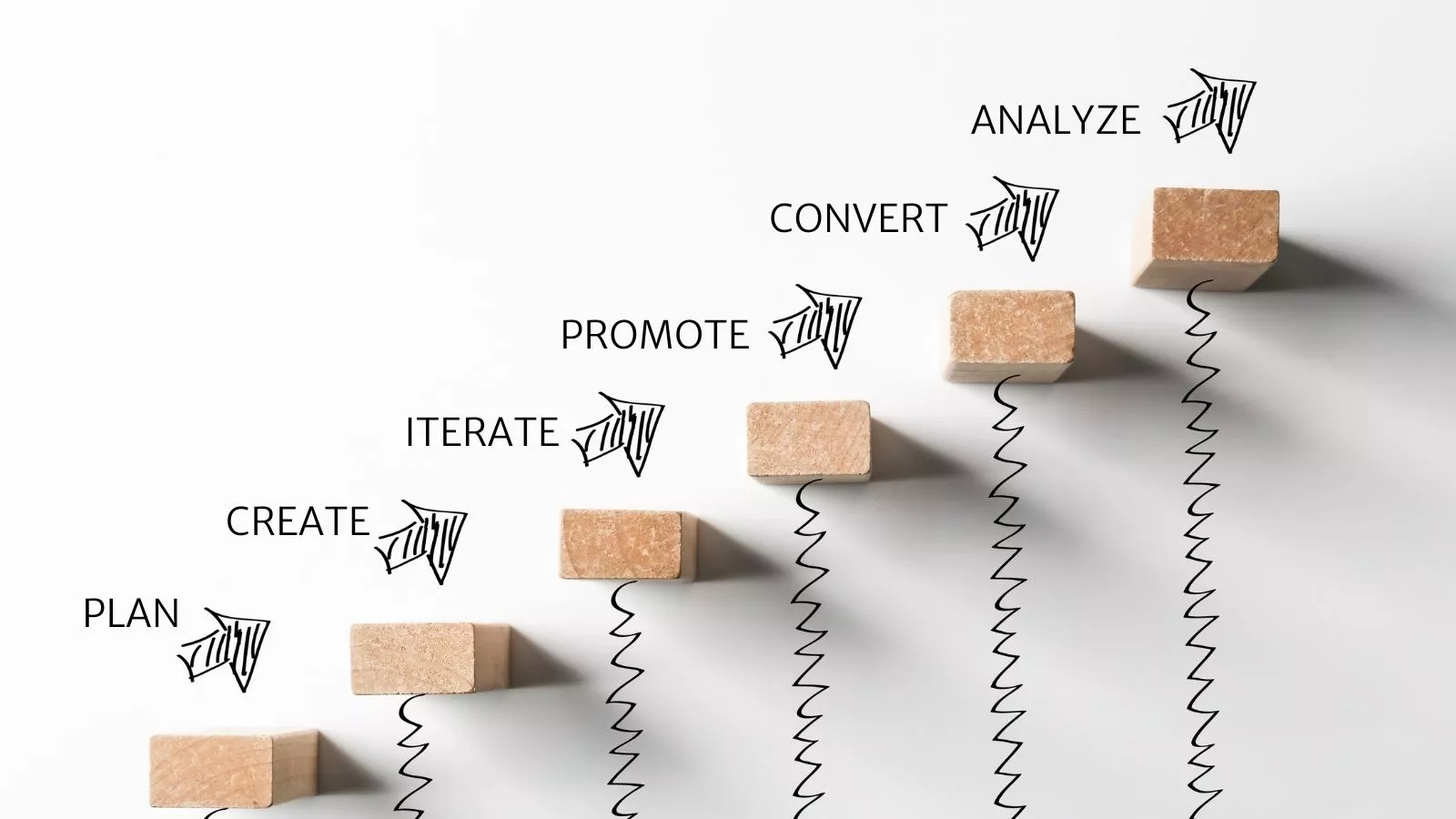
Step 1: PLAN your content marketing
A content strategy PLAN identifies your audience, your content, and your timing.
Define your audience
First, clearly identify your target market, persona, or avatar. Get very specific. Who is this person? Even if you’re a B-to-B company, you are marketing to a person.
Decide on the type of content.
Next, understand what you’re going to publish.
While advertising focuses on what YOU want to tell your audience. Content marketing flips that thinking on its head. It’s about what the prospect, lead, or customer wants to know.
What THEY want, where THEY are on the internet, and when THEY are on the internet. It’s not about you. ?
What are people searching for online, relevant to your business? This is where keyword research can really come in handy. What are prospects or customers asking you in person? These are clues to what your persona (target audience) finds VALUABLE and RELEVANT.
Determine the content your persona wants. Keep in mind the VALUABLE and RELEVANT part of the definition. It’s valuable to them—not you. It’s relevant to them AND your business.
Make a timeline.
Furthermore, make a timeline–a content calendar of when and how you’ll share your content, and a general schedule of your plans. Keep the CONSISTENT part of the content marketing definition in mind.
Identify resources.
Part of your PLAN is understanding who has the expertise, skill, interest, and bandwidth to create and execute the content marketing strategy.
Enterprise organizations hire separate people or even teams of people to strategize, write the content, design the graphics, post on various platforms, monitor social media, and analyze the results.
Small and mid-size businesses rarely, if ever, have that luxury. That’s why nearly two-thirds of companies outsource their content marketing.
When providing our content marketing services, we not only develop the plan but we’re involved in every stage of the content creation. For example, we often interview a subject matter expert (SME). We generate the content, the SME reviews it, and the SME is the by-lined author. We publish the content, and we analyze the results. Our goal is to make it as easy as possible for the small business owner and his/her team.
Know your success measurements in advance.
Finally, before you begin, decide what metrics your business will track to know if your efforts are successful.
Don’t necessarily go for the sale right away. This is the equivalent of asking someone to marry you on the first date. A little creepy and super uncomfortable.
Step 2: CREATE your content.
Once you have a clear plan, you’ll want to CREATE your content. Ideally, you may start with a robust piece of key content—perhaps a long blog, newsletter, video, eBook, infographic or podcast.
Remember, your content should not only be RELEVANT but also VALUABLE. Don’t recreate the wheel. Content that has never been shared before, such as a study you conducted and the results, is valuable. Content that regurgitates old news is not.
E-E-A-T: High-Quality Content
What’s VALUABLE? If you’re not familiar with Google’s Content Resources.
Google uses the acronym E-E-A-T to describe high-quality content. E-E-A-T stands for Expertise-Experience-Authoritativens-Trust. High-quality content is more likely to be found in search results on the internet.
How do you show your company and your author’s expertise? Ensure that the “author” or creator is an expert in the subject matter. Similarly, Google reports that the Authoritativeness and Trust of the content increases if the content, the creator, and the website have authority and are trustworthy in the subject matter.
Trust is an important quality factor with Google—especially if you’re a “Your Money or Your Life” (YMYL) website. If you’re selling any type of products or promoting any type of health products, being trustworthy is crucial.
For example, a car mechanic who wrote a blog about how to treat back pain would not be considered an expert, but an MD would. And vice versa. Quality means staying in your lane—and ensuring that if you are an expert and a trustworthy authority on a subject there is enough evidence on the internet that establishes your E-E-A.T.
We’ll discuss more about E-E-A-T in an upcoming post and video.
Step 3: ITERATE or CURATE your content
Now that you have your core piece of content written or recorded, you’ll want to ITERATE or CURATE it for other platforms.
For example, you may start with a blog, then videotape similar content, send the blog out in an email, create an infographic of the information, or create bite-size pieces of content for social media consumption. Marketers refer to that process as curation.
Step 4: PROMOTE your content.
Next promote your content across more than one platform. This recent SEMRUSH survey of 17,000 content marketers answered the question: Which channels are you using for content distribution?
Topping the list for marketers was organic search (89%) followed by social media (87%). Nearly three-quarters were also using email marketing and just shy of half were also promoting their content through paid channels.
You may decide to promote content across social media channels. In the same study, content marketers indicated that they found Facebook (36%) and LinkedIn (36%) to be similarly effective social platforms to distribute content.
However, be sure to post on a platform YOUR target audience participates in social media. For example, if you’re marketing to retirees, you wouldn’t choose TikTok or Snapchat. Similarly, if you’re selling circuit boards or other manufacturing parts, Instagram would rarely make sense for your business. Read the free eBook, The Complete Social Media Marketing Guide for SMBs, for more guidance.
Be sure to post on the social media platform where your audience is located.
Step 5: CONVERT
When creating content, don’t forget to ask people to take the next step in the customer journey. The completion of this action is called a “conversion.” (Sometimes “conversion” means a sale, but in marketing-ese, sometimes a conversion is simply a response to a call-to-action.)
Don’t necessarily go for the sale right away. This is the equivalent of asking someone to marry you on the first date. A little creepy and super uncomfortable.
At first, prospects may be willing to subscribe or learn more. They may be willing to download information, but they may or may not be ready to buy from you.
Content marketers call this step a CTA or call-to-action. Depending on the stage of the funnel, common calls to action might include:
- Learn more.
- Subscribe to our newsletter.
- Download our eBook, Infographic, Guide, etc.
- Buy now.
Step 6: ANALYZE your results.
One of the most exciting things about digital marketing is that it’s measurable. People’s opinions may vary, but the data holds the answers.
Keep in mind the ULTIMATELY drives profitable action. The additional revenue may not be generated right away—particularly if you have a long buying cycle (the time from awareness to purchase). But you certainly will be able to see if you’re on the right track.
For example, a sales rep who is below quota might report that the content marketing is not generating interest in the services. Is that true? Maybe.
It’s important to check the data. For example, you’ll be able to see how many people went to your blog page and, on average, how long they stayed. You can also track who responded to the call to action.

Types of Content Marketing in the Marketing Funnel
When determining your content plan for the year, you may find it useful to consider a content marketing funnel. Many variations of the funnel exist. At each stage of the customer journey/marketing funnel, different types of content are appropriate. What’s more, these will be defined by your persona’s unique journey.
Typically, you’ll have more content at the top of the funnel. At the same time, you’ll want to ensure that you have content to appeal to your persona at stages in the customer journey.
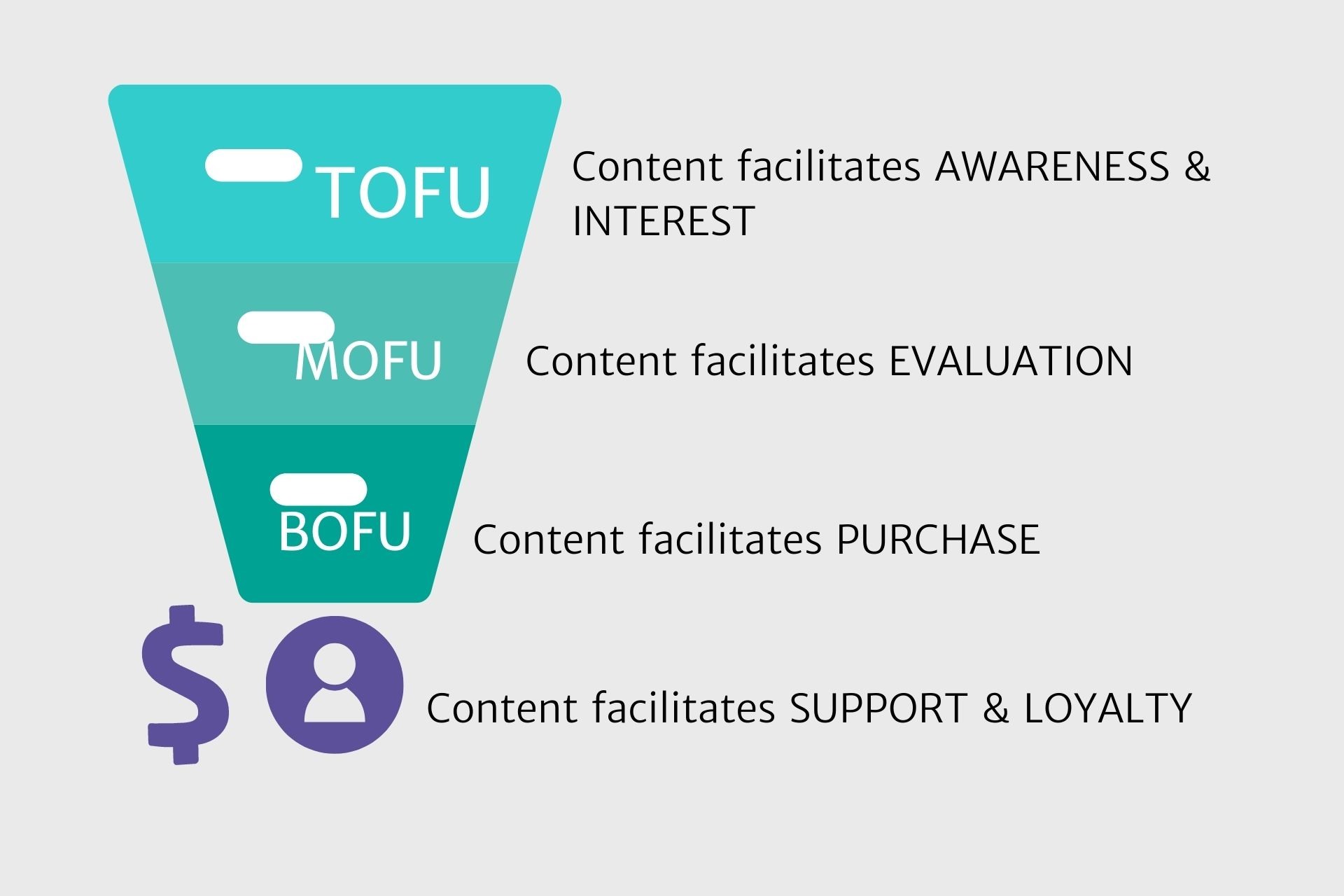
Types of Content Marketing in TOFU
At the top of the funnel (TOFU), you have your prospects who are not aware of your product or service or its benefits. Some examples of content marketing at the TOFU could include these vehicles:
- Blogs
- eBooks
- Infographics
- Newsletters
- Photos
- Podcasts
- Primary Research (original to you)
- Social Media Updates
- Videos
- Web pages
The “vehicle” is less important than the messaging. It will create greater awareness and interest in the product or service. Activities at the TOFU are similar to flirting in a romantic relationship.
Types of Content Marketing in MOFU
In the middle of the funnel (MOFU) are those who have expressed some level of interest in your product or service. These people are beginning to research more information.
Some examples of content marketing vehicles at the MOFU could include:
- Downloads
- Educational Resources
- Emails
- eNewsletters
- Events
- Offers
- Quizzes/Surveys
- Webinars
- Other Useful Resources
In the MOFU, prospect may be willing to provide an email address, phone number, or other contact information in exchange for the valuable content you’re providing.
This could be considered the romantic equivalent of dating.
Types of Content Marketing in BOFU
At the bottom of the funnel (BOFU) is content that will help facilitate a purchase.
Some examples of content marketing at the BOFU could include:
- Customer Stories
- Demo
- Free Trials
- Mini-Class
- Spec Sheets
- Webinar Events
These are the romantic equivalent of getting engaged.
Types of Content Marketing for Customers
Once your persona has become a customer, you may have the opportunity to generate repeat business or transform the buyer into an advocate for your brand.
Some examples of content marketing to create brand ambassadors might be:
- Troubleshooting Videos
- How-to Articles
- Showcase a Customer’s Success
- Build an Online Community
- Special Customer Training, Events, or Webinars
This content is the relationship equivalent of keeping the relationship vibrant. It’s about going above and beyond. It answers the question, “What have you done for your customers lately?”
If you enjoyed this article, please subscribe (below) to our monthly blog.
Nancy Burgess

